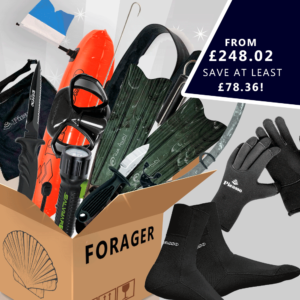Foraging is such an easy and cheap way to feed yourself and the family. For next to nothing, you can enjoy a really fun day out in nature and you get to enjoy some of the freshest food on the planet that hasn’t been pumped with growth hormones, antibiotics, chemical additives and more. The kids will love collecting bounty to cook up, while learning about responsibly sourcing their food from a known source. If you’ve never tried it before, just give it a go and see what you can find – it’s so much fun harvesting your own tea.
This article covers foraging out of the water (or in very shallow water in wellies/crocs). It looks at what you might find exploring the sea bed down on the low tide mark (so check the tide times before you go) or rummaging through the seaweed on the rock beds.
Gearing up
As a minimum before you forage, make sure you have some knives, a foraging catch bag, a size gauge and something for your feet like wellies or these thermorubber shoes. A shucker is very helpful for opening the oysters. When you’re checking minimum sizes, measure across the longest part of the shell.
Remember you’ll find bigger and better bounty if you’re willing to dive so check out our foraging package for everything you could possibly need. Read more about foraging crabs, lobster, octopus and kina here.
Scallops
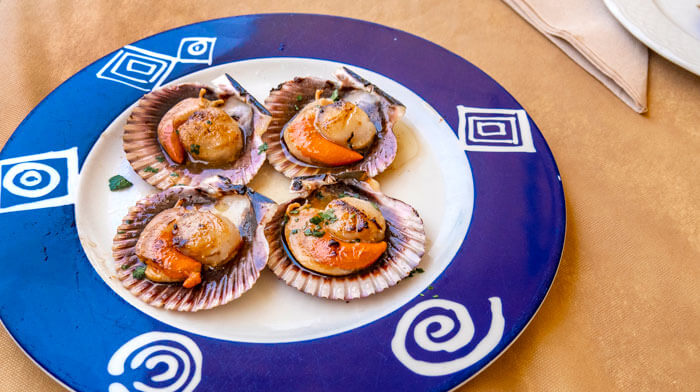
As the tide is ebbing out, listen carefully as you walk along the sea bed – you can hear the scallops clapping and splashing. You’ll find king scallops and the smaller queen scallops hiding in little hollows, sometimes under seaweed, with their larger side down. King and queens taste different – kings are a little sweeter and nicer. They’re incredibly healthy, packed with omega-3 fatty acids, potassium, magnesium and B12 amongst other things.
Under Cornwall IFCA limits, the minimum size for a scallop is 100mm (10cm) width (40mm for a queen scallop). If they’re smaller than this, cover them back up and leave them.
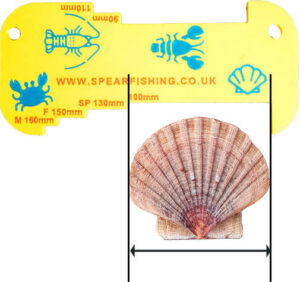
These need to be properly alive to be edible and you’ll know this because they’ll be shut tightly.
Scallop shells are made up of a flat side and a dome shaped side. You can leave them in your fridge alive for a bit, dome side down.
You can open these with a normal sharp knife: you just run it along the flat shall to cut the muscle off. When you open them, you need to remove the curtain and you’ll be left with the white pale muscle and the coral. Although the coral is edible, it can be rather rubbery and most people remove it.
You have to cook scallops extremely quickly – they are seared briefly in a hot pan, needing very little fat or flavour adding.
Oysters
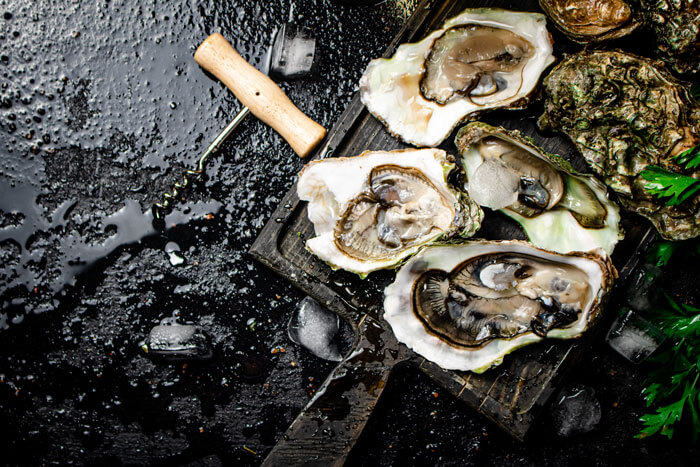
You’ll find native oysters on the sea bed or attached to smaller rocks. There are also non-native (invasive) oysters that hang onto the sides of larger rocks. Like scallops, you’ll only want to keep the big ones. Native oysters don’t grow as big as the invasive ones which can grow pretty massive.
Note that you cannot hand gather the native oysters in the ‘Fal Fishery area‘ without a licence – broadly this is Truro and Falmouth Harbours.
These are also kings of nutrition, with 100 grammes offering more than 12 times your RDA of vitamin B12, plus a tonne of zinc, copper and iron.
In terms of cooking them, there’s an old saying that you can eat them raw if the month name has an R in it (January etc) and that’s because the bacteria isn’t present
in colder months. However, I’d recommend you cook them anyway by grilling, poaching or baking them in their shell. Oysters are filter feeders, so cooking ensures any harmful bacteria from the water they live in is removed.
Cockles
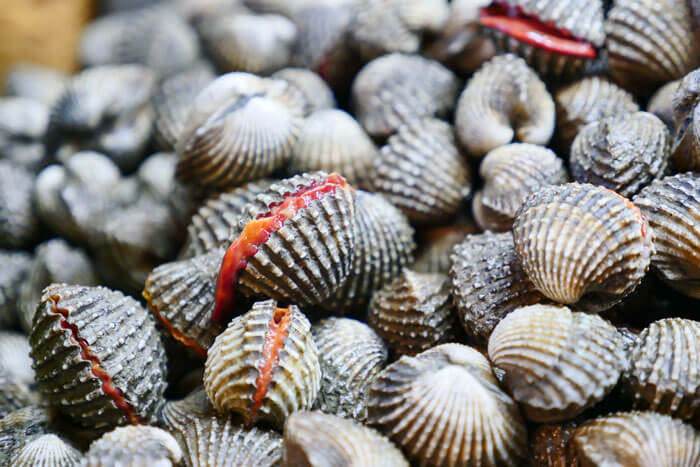
Everyone’s had a tub of tasty cockles on visiting the seaside and they are an easy one to collect for yourself. They vary in size and colour, depending on which part of the UK you’re in. They’re high in protein and low fat so a great addition to your meals, be it salads, soups, a risotto, paella or pasta.
IFCA rules state that cockles cannot be removed from Cornish estuaries if they pass through a space of 20mm width, so that’s the minimum size you’re looking for.
Cockles can be foraged at low tide, using a rake. They should be live, they should smell fresh, and their shells should be closed. If you find one that’s open, give them a strong tap on a hard surface – if it doesn’t close, throw it away. Give them a good rinse before you cook them to get rid of sand and dirt. Then all you need to do is steam them in a large pan with a lid. Boil up a cup of water first, add a splash of lemon juice, pop them in the pan, and cover. They’ll be done in a couple of minutes and the shells will spring open ready to be eaten (discard any that don’t).
Mussels
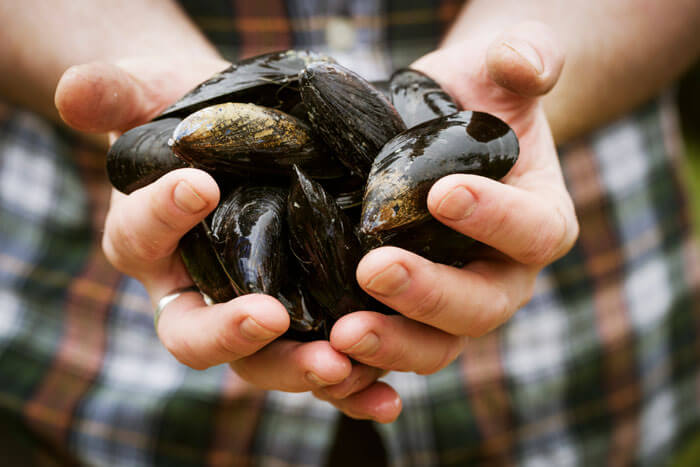
These are a fantastic source of protein and omega 3 fatty acids, not to mention a host of other nutrients.
As for native oysters, you cannot hand gather mussels in the ‘Fal Fishery area‘ without a licence and again as a reminder, this is broadly the Truro and Falmouth Harbours.
You’ll only find these up near the rocks – they have little strings that they like to hang onto the rocks with called ‘the beard’, so no rocks = no mussels. Look for good sized ones.
When it comes to cooking time, make sure they’re closed up like the cockles above. You can clean the beard and barnacles off with a good knife (we sell lots suitable for the job, ask us if you need advice) and give them a rinse. Then what you do next is up to you – they are often enjoyed as Moules Mariniere with cream, garlic and white wine but a squeeze of lemon juice will also do the job.
Remember with mussels, if they don’t open during cooking, throw them away.
Clams
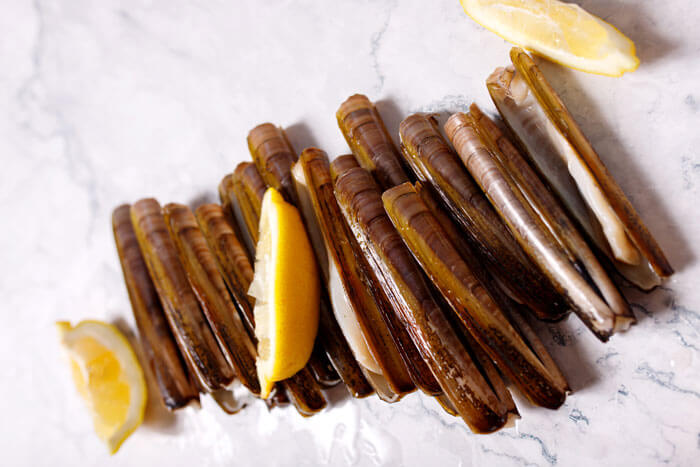
Above: Razor clams
There are a few types you might find including regular clams, razor clams and gaper clams. Look along the sea bed for little holes. If it’s a round hole, it’s probably a regular clam – if it’s a slit, it’ll likely be a razor clam hiding in there. Sometimes you’ll see little squirts of water shooting up too.
Razor clams look similar to Bean Solen (bean razor clams).The bean razor clams are shorter and the shell is less straight and razor-like. Also, the ‘hinge’ between the two shells is much shorter and is located between a third and half way down the shell. It’s worth knowing because the minimum sizes are different.
A neat trick from TheFishLocker is to take a tub of regular table salt along with you and pour it down the hole. If there’s a clam down there, you’ll see the hole reform as it tries to spit out the salt. Keep putting that salt in and eventually the clam will pop out.
If you see something that looks like a thumb sticking out of the hole, that’s the tongue of a gaper clam. These are big beasties, growing up to 6 inches, but they’re a harder catch. You might need to dig that out with a little shovel around the hole and be warned they will dig down or even squirt water at you.
Minimum sizes under Cornwall IFCA: Clam 40mm, Donax Clam 25mm, Bean Solen 65mm, Razor Clam 100mm, Short Necked Clam 35mm, Surf Clam 25mm

Above L-R: Dondax clam, Short necked Clam, Surf Clam, Gaper. See below for image credits.
Clams only need a quick boil to open the shells and they’re ready to go, but they’re also very versatile and work well steamed in white wine with parsley and garlic, served with a little sourdough. Mmm! Don’t forget these are the essential ingredient in delicious clam chowder too!
Winkles
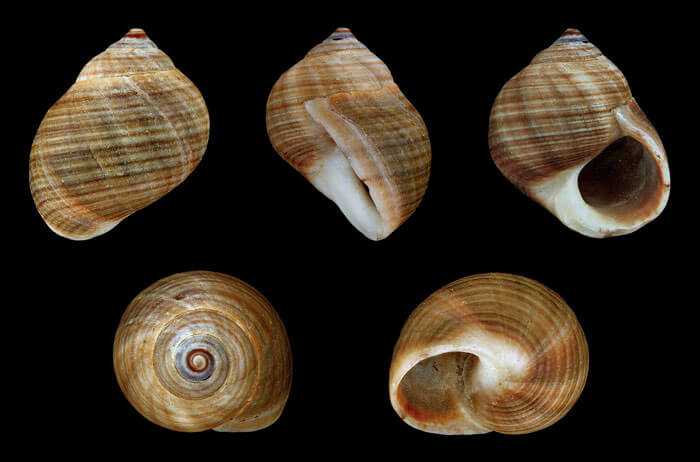
Winkles are also known as the common periwinkle, and they’re yet another great nutritional powerhouse. They’re full of antioxidants and packed with protein and potassium, while being low in fat. You can tell them apart from whelks (below) because they’re typically smaller and have a darker shell.
Under Cornwall’s IFCA code of practice (check your own area if different), winkles should only be retained if they “fail to pass through a riddle constructed of rigid mesh or bars spaced at least 16mm apart”. So that’s the size you’re looking for.
These need boiling for for 3 – 4 minutes, and then can be eaten with a cocktail stick or something similar. The tasty bit is sealed in with a small disc which you get out with your choice of tool – then you just hook out the good stuff underneath.
They can be dipped into mayo, warm butter or even mustard, or thrown into a stir-fry.
Whelks
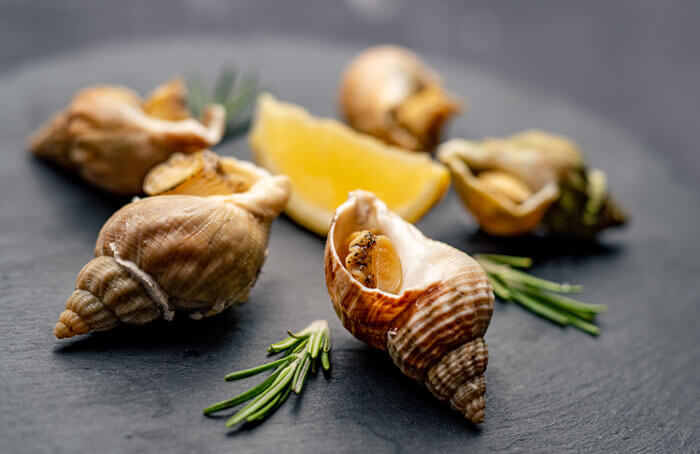
Whelks is a general term for any of the sea snail species that have a swirling, tapered shell which is usually brownish or grey and slightly pointed. The minimum size for collecting these under IFCA rules is 45mm. They are a good source of protein, calcium, zinc and iron – in fact, a small plate of whelks has more calcium in it than a glass of milk!
It’s best to wash fresh whelks well in a few changes of water, then give them a good soak for a couple of hours. They need cooking for about 10 to 15 minutes in boiling salt water – cook them too long and they’ll be rubbery.
Finally:
Follow TheFishLocker on YouTube for plenty of awesome foraging videos!
Additional image Credits (other than our own images or Envato licensed images): Dondax clam by Debivort – Own work by Author, CC BY-SA 3.0, https://commons.wikimedia.org/w/index.php?curid=1626674; Short necked clam by H. Zell – Own work, CC BY-SA 3.0, https://commons.wikimedia.org/w/index.php?curid=133045008; Surf Clam by Invertzoo – self-made by Invertzoo, CC BY 3.0, https://commons.wikimedia.org/w/index.php?curid=5706189; Gaper by Charles Howard Edmondson – Edmondson, Charles H. (1923) Shellfish Resources of the Northwest Coast of the United States., Report of the United States Commissioner of Fisheries, 1922, Washington, DC: Government Printing Office, Public Domain, https://commons.wikimedia.org/w/index.php?curid=42888076

